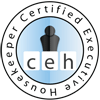A chelating agent is a chemical compound used in laundry detergents to remove dissolved minerals such as calcium and magnesium, and reduce yellow discoloration caused by iron and manganese. These water softeners suspend the minerals, allowing the detergent to do a better job. Unlike precipitating builders such as sodium carbonate that cause the minerals to fall out of solution as insoluble compounds which build up on fabrics and laundry equipment, these keep the minerals in solution so they can be rinsed away.
entry continues below ↓
Sodium citrate is a good example of an environmentally friendly
chelating agent.
Phosphates also perform well, but contribute to algae growth in lakes and ponds. EDTA (ethylene diamine tetraacetic
acid) is a well-known chelating agent used in laundry
detergents. However, substitutes have been developed because EDTA does not biodegrade in the environment.
Reference:
Dr. Bassam Z. Shakhashiri, University of Wisconsin, from the
Science is Fun Web site.
Chelating agent: Created on November 3rd, 2009. Last Modified on December 27th, 2009
References listed above credit sources The Housekeeping Channel consulted for background or additional information.
All HC-PediaTM content is © 2005-2025 The Housekeeping Channel.
Except for third-party copyrighted material, you may freely use, excerpt or cite this material provided The Housekeeping Channel receives credit and the Web address www.housekeepingchannel.com is plainly listed with all uses, excerpts or citations.









